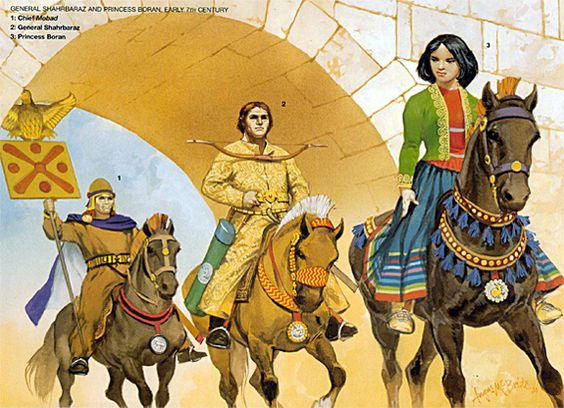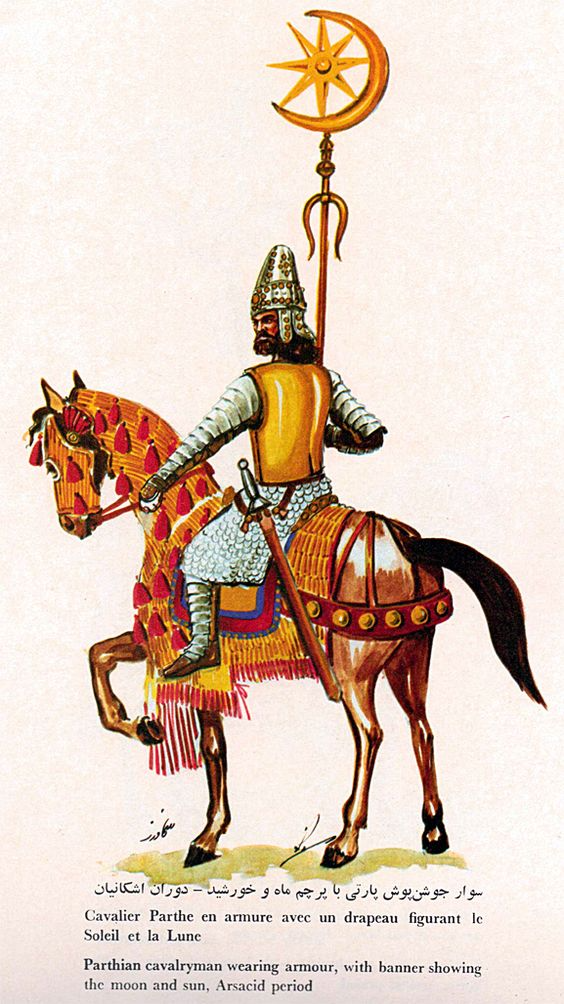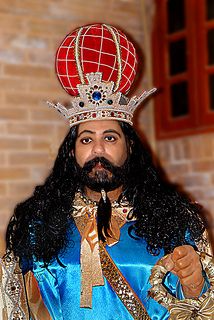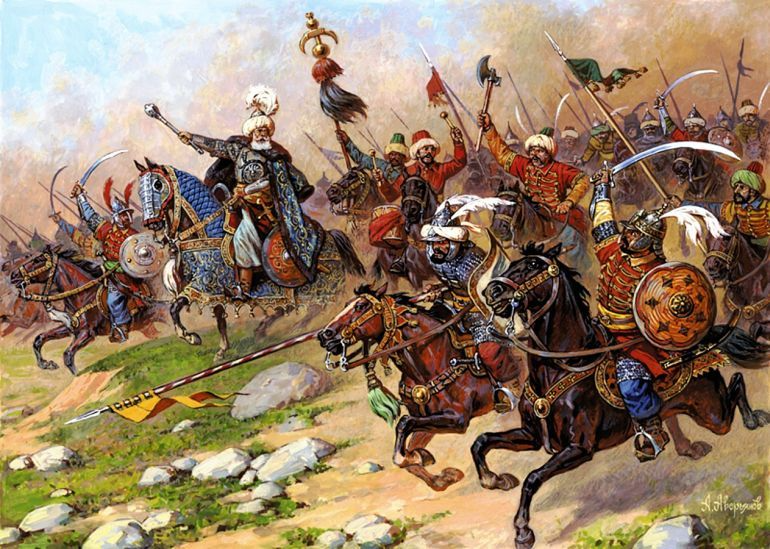I know many of you are wedded to the idea of the Lunar Heartlands being Rome. But to me, this is a Lunar princess riding out of Glamour accompanied by another Lunar nobleman and an officer.
![]()
![]()
And that is obviously a Yelm cult headdress!
Why is the bow being worn around the neck? I do know that some archers carry the bow in that manner while hunting as it frees up both hands. But honestly, I have no idea what McBride’s source was, except that in the absence of contrary authority, I am more than willing to give him the benefit of the doubt.
Here’s another lovely one – presumably this is an officer of the Lost Sky or similar Lunar unit. They got the color of the standard off, but note the wedding of the Moon and the Sun:
The Roman Empire is certainly “a” source of ideas for the Lunar Empire, but visually I don’t see the Lunars as being particularly all that Roman – the Persians are probably just as good a visual source of ideas. And when you think about their warfare, the Lunars are far more cavalry-oriented than infantry (I’ve been working on the new WBRM for the last year or so, so I am pretty immersed in that).But ultimately, both are pretty limited. The Lunars, like the Orlanthi, are their own thing. So if you start going down the Lunars are Roman route – throw some Persian or Seleucid images at yourself. If you go too far down the Persian route, go watch Gladiator again or I Claudius. And if you are in balance with both, go and read some Moorcock, or Dune, or the Wyrm Ouroborus, or John Buscema’s Conan comics. Put it all in the blender and press puree!
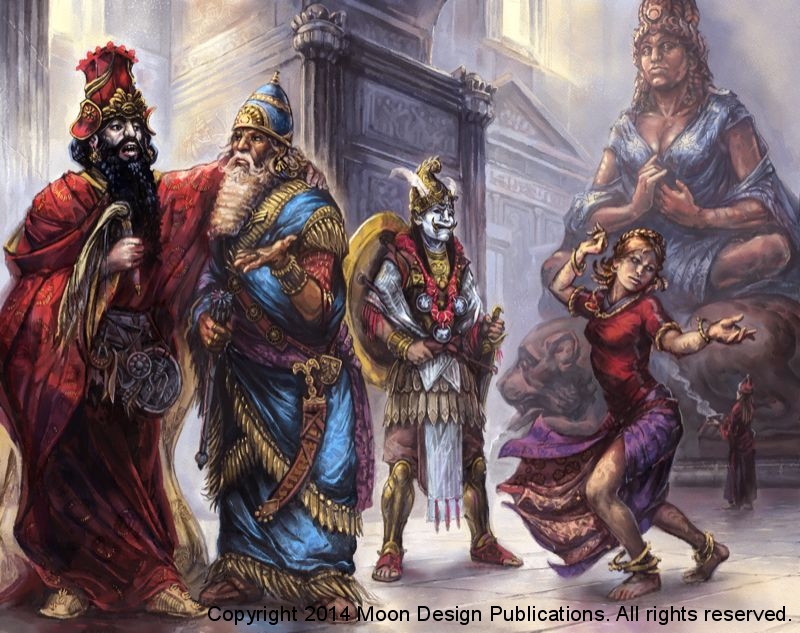
Whether the Horse Lords influence is a residue from the Dawn Age, or from Sheng Seleris, or from the terrible nomad wars of the Fifth Wane, it is definitely there. Just look at all those cavalry units in WBRM.But then again, it is really that Lunar College of Magic that gives the Lunar Empire its edge. Anyone can muster a lot of cavalry. The Pentans did that. The Carmanians did that. But just about nobody ever managed to get a multidisciplinary synergy going with massed magicians. And nobody ever managed to have a tamed Chaos demon as a shock force, or call down meteors as artillery. And that’s where the Lunar Empire breaks all mundane models.
For example, I can certainly imagine the Red Emperor wearing a crown like this:
But at the same time, the Persian analogy also has plenty of limitations. The Lunars are a river-based empire, and their plains probably resembles the Midwest more than it does the Iranian Plateau!
One way of thinking about this is a reverse Mississippi that discharges its waters into Lake Superior, making Elz Ast be something pleasant like Duluth, Yuthuppa being the Twin Cities, Raibanth being Davenport, and Alkoth being St. Louis.
And when I think of it that way, the Kalikos Expeditions make perfect sense!
We as writers, illustrators, etc. know all these references, but don’t need them for people to get an impression of the Lunars.We just say they are a big empire that rules much of the world, is ruled by the Red Emperor – a son of the Red Moon Goddess. The Lunars have weird Moon magic that is timed with the phase of the Red Moon, and they are nigh-unstoppable because of their magicians and the giant Crimson Bat that devours cities and armies.And then show them the pretty pictures from forthcoming books. Especially the one showing a happy Crimson Bat devouring a city!
As an aside, I am working on the chit counters for the new edition of WBRM, so the look of the Lunars is very much in mind.
And just for fun, this is perhaps a good inspiration for what the mundane elements of the Lunar Army look like in action:
which helps explain Greg’s early sultan/satrap confusion. Because damn if those satraps don’t look like they ought to be sultan of somewhere!
The guy leading the cavalry charge is probably a Lunar satrap, who sure does look like he ought to be a sultan of somewhere. But he’s not the Red Emperor so he is not the caliph or the padishah.
Satrap Dara Happan/New Pelorian/Carmanian. Term literally means “protector of the province.” Denotes a ruler with some inherent authority that is properly subordinate and loyal to the emperor.
Sultan Pentan/New Pelorian. Term literally means “power” or “authority”. Denotes a ruler who claim almost full sovereignty, but without claiming universal rule. In the early Lunar Empire “sultan” was used synonymously with “satrap”. After the fall of Sheng Seleris, this title has largely disappeared in favor of “satrap” although it is sometimes used to describe the rulers of peaceful barbarian nations and sometimes for powerful satraps or governors.

